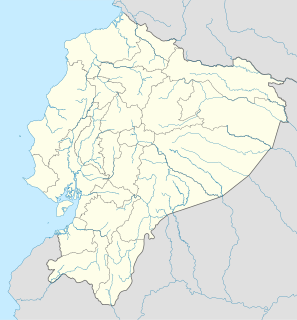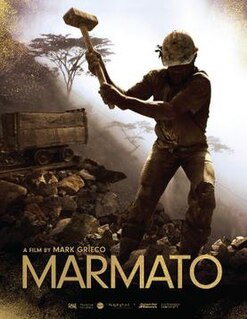Strip mining and the murder of a priest
In 1946, after various disputes about mining rights, the government established a zone in the hills where the town stands, which was to be the preserve for mining by the various small miners of the town. This was in effect until 2007, when the Canadian mining company Medoro Resources merged with a Colombian company to form the conglomerate called "Gran Colombia Gold". This corporation proposed digging a massive strip mine on the site of the town, which would require the total demolition of the town and the relocation of its populace.
Naturally, the people of the town have resisted this, claiming that the government had violated its own rules in agreeing to this. On 1 September 2011, the local parish priest, the Reverend José Reynal-Restrepo was returning on his motorbike from a trip to Bogotá, the nation's capital, to clarify the company's claims that the local Archbishop had agreed to the sale of the Church's property in the town. He was stopped just outside the town and shot to death.
Opponents of the plans to move the town claim that it was agents of the mining company who murdered him, due to his opposition to the plans. Reynal himself had made a video just days before his death, in which he said that only his death would end his opposition to the move. Spokesmen for the mining company say that his death was a regrettable case of random banditry. [3]
A partially crowdfunded [4] documentary released in 2014, directed by Mark Grieco, chronicles six years of the battle between Gran Colombia Gold and the community. [5]

Pachuca, formally known as Pachuca de Soto, is the capital and largest city of the Mexican state of Hidalgo. It is located in the south-central part of the state. Pachuca de Soto is also the name of the municipality of which the city serves as municipal seat. Pachuca is located about 90 kilometres (56 mi) from Mexico City via Mexican Federal Highway 85. There is no consensus about the origin of the name Pachuca. It has been traced to the word pachoa, Pachoacan, and patlachuican.

Cobar is a town in central western New South Wales, Australia whose economy is based mainly upon base metals and gold mining. The town is 712 km (442 mi) by road northwest of the state capital, Sydney. It is at the crossroads of the Kidman Way and Barrier Highway. The town and the local government area, the Cobar Shire, are on the eastern edge of the outback. At the 2016 census, the town of Cobar had a population of 3,990. The Shire has a population of approximately 4,700 and an area of 44,065 square kilometres (17,014 sq mi).
A mining accident is an accident that occurs during the process of mining minerals or metals. Thousands of miners die from mining accidents each year, especially from underground coal mining, although accidents also occur in hard rock mining. Coal mining is considered much more hazardous than hard rock mining due to flat-lying rock strata, generally incompetent rock, the presence of methane gas, and coal dust. Most of the deaths these days occur in developing countries, and rural parts of developed countries where safety measures are not practiced as fully.

Zaruma, officially Villa Real de San Antonio del Cerro de Oro de Zaruma is a town in the south of Ecuador, El Oro Province. It is located in the south-east of this province, at an altitude of 1200 metres above sea level, on an inter-Andes route where the Vizcaya mountain range branches off from the Chilla mountain range. It is the seat of Zaruma Canton, one of the oldest cantons in the province.

Amalfi is town and municipality of the Colombian Andes, northern part of the Central Mountain Range in the Antioquia Department and part of the subregion of Northeastern Antioquia. The territory of Amalfi is bordered by the municipalities of Anorí and Segovia at its north; Segovia, Remedios and Vegachí at the east; Vegachí, Yalí, Yolombó and Gómez Plata at the south and Anorí and Guadalupe at the west. The town is served by Amalfi Airport.

Santa Rosa de Osos is a middle city and municipality of Colombia located in the northern of the department of Antioquia. Bounded on the north with the municipalities of Yarumal and Angostura, on the east with Guadalupe and Carolina del Principe, on the south with the municipalities of Donmatías, San Pedro de los Milagros and Entrerríos, and on the west with Belmira and San José de la Montaña.

Empire Mine State Historic Park is a state-protected mine and park in the Sierra Nevada mountains in Grass Valley, California, U.S. The Empire Mine is on the National Register of Historic Places, a federal Historic District, and a California Historical Landmark. Since 1975 California State Parks has administered and maintained the mine as a historic site. The Empire Mine is "one of the oldest, largest, deepest, longest and richest gold mines in California". Between 1850 and its closure in 1956, the Empire Mine produced 5.8 million ounces of gold, extracted from 367 miles (591 km) of underground passages.

New Almaden, known in Spanish as Nueva Almadén, is a historic community and former mercury mine in the Capitancillos Hills of San Jose, California, located at the southwestern point of Almaden Valley in South San Jose. New Almaden is divided into two parts: the mines and much of their immediate surroundings, including historic ghost town settlements in the Capintancillas, which together form the Almaden Quicksilver County Park, and the largely residential historic district surrounding the Casa Grande.

The Cornish diaspora consists of Cornish people and their descendants who emigrated from Cornwall, United Kingdom. The diaspora is found within the United Kingdom, and in countries such as the United States, Canada, Australia, Argentina, New Zealand, Mexico, Panama, South Africa, the Samoas and Brazil.

Mineral del Monte, commonly called Real del Monte or El Real, is a small mining town, and one of the 84 municipalities of Hidalgo, in the State of Hidalgo in east-central Mexico.
The Revived Cornish Stannary Parliament, is a pressure group which claimed to be a revival of the historic Cornish Stannary Parliament last held in 1753. It was established in 1974 and campaigned, up until 2008, against the government of the United Kingdom's position on the constitutional status of Cornwall.

El Oro is one of 125 municipalities in the State of Mexico within the United Mexican States. The county seat is the town of El Oro de Hidalgo. The name El Oro means "the gold" in Spanish. It has subsequently been given an alternative Nahuatl name of "Teocuitlatl", meaning "sacred excrement". Its seal, in the form of an Aztec glyph, contains elements referring to gold and to caves, of which there are many in the municipality.

Eduardo Neri is one of the 81 municipalities of Guerrero, in south-western Mexico. The municipal capital is Zumpango del Río. The municipality covers an area of 1289.6 km².

The North Star Mine and Powerhouse are located on Lafayette Hill a short distance south of Grass Valley in the U.S. state of California. It was the second largest producer of gold during California's Gold Rush. In 1898, the largest ever Pelton wheel for its time was built for the mine. The North Star Mine Company also owned locations on Weimar Hill, adjoining and south of the North Star Mine. It shut down during World War II after its consolidation with the Empire Mine.
The Reverend José Reynal-Restrepo (1977–2011) was a priest of the Roman Catholic Archdiocese of Manizales and the parish priest of the town of Marmato, Caldas in Colombia, South America. Founded in 1540, Marmato is one of the historic gold-mining regions of the hemisphere. He was murdered on September 1, 2011, while returning home.
Restrepo is a surname and may refer to:

Marmato is a 2014 American documentary film written, directed and produced by Mark Grieco. It is the debut feature film of Grieco. The film premiered in competition category of U.S. Documentary Competition program at the 2014 Sundance Film Festival on January 17, 2014, where it won the Candescent Award.

Francis Rule was a Cornish miner who moved to Mexico and became immensely wealthy. He used pumping equipment to explore abandoned mines that had been flooded, formed various mining companies, and found and exploited rich seams of silver. The town of Pachuca holds various public buildings and monuments financed by Rule.

The Cobre mine was a copper mine in Cuba, the oldest in the new world. The open pit mine was operated from 1544 to 1998. The Spanish used slave labour and free coloured labour to work the mine. After it had been abandoned, in the 19th century a British company acquired the mine and reopened it, again using slaves and free coloured labourers, but also using skilled Cornish miners and steam engines from Cornwall to operate pumps. The mine was abandoned again, then reopened by an American company at the start of the 20th century. After the Cuban Revolution it was taken over by the state. After being finally abandoned the pit is now filled with a mineral-rich lake.
The October 2018 Tumeremo massacre is at least the third civilian massacre of miners in the Venezuelan town of Tumeremo since 2016. Occurring over three days from 14 October 2018, it is suspected that a Colombian guerrilla group is responsible for the murders.



















